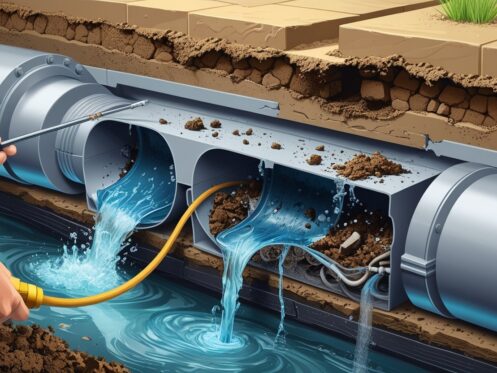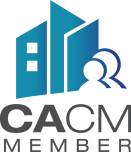A clogged main plumbing drain can disrupt your daily routine and lead to significant inconvenience. Recognizing the early signs of a clog—such as slow drains, gurgling sounds, or unpleasant odors—can save you from more extensive problems down the line. Taking prompt action is crucial to prevent further damage and costly repairs.
There are several methods you can try to address minor clogs yourself. Common techniques include using hot water, baking soda, and vinegar to break down blockages. If these approaches don’t work, professional assistance may be necessary. For those situations, consider turning to Splash Plumbing, a trusted plumbing service with a history of effective solutions for drain issues.
Understanding the causes of main drain clogs is also vital. Items like grease, hair, and foreign objects contribute to buildup over time. By being proactive and performing regular maintenance, you can help keep your plumbing system running smoothly and avoid the hassle of unexpected clogs. If you need expert advice or immediate assistance, Splash Plumbing is ready to help you with all your plumbing needs.
Understanding Main Plumbing Drain Clogs
Knowing the common causes and symptoms of main plumbing drain clogs can help you address issues promptly. These blockages can significantly impact your plumbing system, leading to more severe problems if left untreated.
Common Causes of Main Drain Blockages
Several factors can lead to clogs in your main drain line. One prevalent cause is food particles, which can accumulate over time and restrict water flow. Additionally, grease from cooking is a major culprit, as it solidifies and sticks to pipe walls.
Tree roots are another significant issue, as they can invade sewer lines and cause severe blockages. Other causes include toilet paper buildup and foreign objects mistakenly flushed down toilets. Regular maintenance and awareness of what goes down your drains can prevent these issues from developing.
Signs and Symptoms of a Clogged Drain
You may notice several signs indicating a clogged main drain. One of the most common symptoms is multiple drains in your home backing up simultaneously. If your toilets gurgle or water backs up when using the sink, there’s likely a blockage.
Another red flag is foul odors emanating from your drains, which may indicate trapped sewage. Slow draining in sinks and tubs also often points to a main drain issue. Being aware of these signs helps you react quickly before the problem worsens.
How Main Drain Line Problems Affect the Plumbing System
Main drain clogs can have serious repercussions for your entire plumbing system. When the main line is blocked, wastewater cannot flow out, leading to backups and overflows. This condition can result in damage to plumbing infrastructure and your property.
Poor drainage can also create ideal conditions for mold growth and create unpleasant odors in your home. If you suspect a blockage, professional help is crucial. Businesses like Splash Plumbing specialize in resolving these issues efficiently, ensuring your plumbing system remains in top condition.
Identifying and Locating the Clog
Recognizing the signs of a clog in your plumbing system can save you time and trouble. By diagnosing household drains and inspecting key components, you can pinpoint the source of the blockage effectively.
Diagnosing Household Drains and Fixtures
Start by examining your household drains, including the kitchen sink and bathroom sinks. Look for signs like gurgling sounds, slow drainage, or unpleasant odors. Multiple slow drains often indicate a main drain line issue. For instance, if your kitchen sink drains slowly after using a garbage disposal, a buildup of coffee grounds or other debris could be the culprit. Always check each fixture individually, as specific problems can indicate different sources of clogs.
Inspecting the Clean-Out Plug
The clean-out plug offers direct access to your plumbing system. It is typically located in your basement or outside your home. Use a wrench to open it carefully. If you observe any wastewater or unusual odors escaping, this suggests a blockage further down the line. If the clean-out plug is dry, the clog may be closer to your fixtures. Regularly cleaning and maintaining access to this plug ensures you can quickly address any issues that arise.
Detecting Tree Roots and Foreign Objects
Sometimes, tree roots and foreign objects create significant blockages in your pipes. If you notice persistent drainage problems, consider whether tree roots have infiltrated your main drain line. Signs include slow drains and frequent backups in your toilets or sinks. You can also look for specific indicators, such as additional water pooling in your yard. If you suspect a root intrusion, professional plumbers like Splash Plumbing can provide comprehensive video inspections to identify the problem without invasive digging or disruption.
DIY Methods to Clear a Clogged Main Drain
When facing a clogged main drain, several effective DIY methods can help you tackle the problem. These techniques range from simple tools to household items, providing options that can suit various situations and preferences.
Using a Plunger and Drain Snake
A plunger is one of the most accessible tools to clear a clogged drain. To use it effectively, ensure the plunger cup is submerged under water, then create a tight seal around the drain. Push down steadily and pull up quickly several times to create suction that may dislodge the clog.
If this method doesn’t work, consider using a drain snake. Insert the snake into the drain and turn the handle clockwise. This action helps to break apart the clog or hook onto debris, allowing you to pull it out. Always wear rubber gloves when dealing with clogs to protect your hands.
Applying Baking Soda and Vinegar Solutions
Baking soda and vinegar create a natural chemical reaction that can help clear minor clogs. Start by pouring about half a cup of baking soda directly into the drain. Follow this with half a cup of vinegar. The mixture will fizz and bubble, helping to break down blockages.
After letting it sit for about 30 minutes, flush the drain with hot water. This combination can help maintain clear pipes and prevent future clogs. Be aware that this method may not be effective for more severe blockages, where mechanical methods might be needed.
Flushing With Boiling Water or Hot Water
An effective and straightforward approach to clear a clogged drain is the use of boiling water. Start by boiling a large pot of water. Once boiling, carefully pour the water directly down the clogged drain. This can help dissolve greasy materials or soap scum that may be causing the clog.
For best results, repeat this process two or three times to ensure the drain is adequately flushed. Hot water can also be combined with baking soda for enhanced effectiveness. If the clog persists, other methods may be necessary.
When to Use Drain Cleaners or an Auger
If the previously mentioned techniques do not work, you might consider using commercial drain cleaners. These products contain powerful chemicals that can dissolve tough clogs. Always follow the manufacturer’s instructions and take precautions, such as wearing gloves and eyewear.
An auger, also known as a plumbing snake, is another option if standard methods have failed. This tool is designed to navigate deeper clogs and is especially effective in removing tree roots or other deep blockages. If you’re uncomfortable using these tools, it may be time to contact a professional, such as those at Splash Plumbing for assistance.
Preventing Main Plumbing Drain Clogs
Maintaining clear plumbing drains is essential to avoid inconvenient blockages. Implementing proper practices can help you manage and prevent clogs effectively. Here are key maintenance tips, particularly focused on your kitchen and sink usage.
Best Drain Maintenance Practices
To keep your main plumbing drain functioning well, regular maintenance is crucial. Consider scheduling a drain maintenance treatment every few months. This includes using a quality drain cleaner or home remedies like a mix of baking soda and vinegar to keep pipes clear.
Avoid allowing grease and food particles down the drain, as these can accumulate and lead to serious blockages. Additionally, running cold water while using your garbage disposal can help wash food particles through your plumbing more efficiently.
Kitchen Sink and Garbage Disposal Tips
Your kitchen sink and garbage disposal play significant roles in your home’s plumbing system. Always use your garbage disposal wisely. Only dispose of small, soft food particles and avoid fibrous materials that can tangle within the blades.
Regularly flushing your garbage disposal with cold water helps clear residue. Cleaning your disposal monthly with ice cubes and rock salt can help remove buildup. Remember to keep a watchful eye on what goes down your sink to help prevent clogs effectively.
Proper Use of Sink Strainers and Pop-Up Stoppers
Utilizing sink strainers and pop-up stoppers is a simple yet effective method to prevent clogs. Place a strainer over your kitchen sink to catch food and debris. This will significantly reduce the amount of waste entering your plumbing system.
Regularly clean these strainers to avoid overflow and ensure maximum efficiency. For sinks with pop-up stoppers, ensure they are functioning correctly. A blocked stopper can create backflow, leading to potential clogs. Preventive maintenance in this area can save you future headache and costs involving plumbing services like Splash Plumbing.
When to Call a Professional Plumber
Addressing a clogged main plumbing drain can often be straightforward, but some situations necessitate the expertise of a professional. Knowing when to call in a plumber can save you time, stress, and potential damage to your property.
Situations That Require Expert Help
There are specific indicators that signal the need for a professional plumber. If you notice multiple drains in your home are clogged, it might point to a more serious issue within the main sewer line. This situation warrants immediate attention to prevent sewage backflow, which can lead to health hazards.
The use of DIY methods such as plungers or store-bought chemicals is sometimes insufficient. When these remedies fail, it’s time to consult a plumber. For example, if water is pooling around fixtures or you hear gurgling sounds from drains, these could be signs of deeper issues. In these cases, a skilled plumber from Splash Plumbing can diagnose and resolve the problem efficiently.
Understanding Sewer Rods and Specialized Equipment
Professional plumbers utilize tools that are not typically available to homeowners. One such tool is the sewer rod, designed to break through tough clogs deep within the plumbing system. This equipment enables plumbers to access difficult-to-reach areas and provide a more thorough cleaning than most household solutions can achieve.
Hydro-jetting is another advanced technique used for stubborn blockages. It employs high-pressure water jets to clear pipes of debris and buildup. Plumbers trained in these methods can effectively restore your plumbing system’s function without causing damage. Recognizing the capabilities of these tools can help you appreciate the value of hiring experts for serious blockages.
Issues Related to Septic Tanks and PVC Pipe
Clogs associated with septic systems or PVC pipes require immediate professional intervention. If you rely on a septic tank system, periodic maintenance is vital to prevent catastrophic failures. Symptoms such as slow drains or foul odors might indicate a full tank or other complications that only a trained plumber can resolve.
PVC pipes can also develop unique issues like cracks or misalignments. These problems may lead to leaks or further blockages. Always consult a professional when dealing with septic systems or damaged plumbing materials. At Splash Plumbing, you can ensure such issues are handled promptly and correctly, minimizing disruption to your life.
Frequently Asked Questions
Here are some common inquiries about dealing with a clogged main plumbing drain. Understanding these aspects can help you identify issues early and choose the right solutions.
What are the signs that indicate a clogged main plumbing drain?
You may notice multiple indicators of a clogged main drain. Slow drainage in multiple fixtures, such as sinks and tubs, is a common sign. Unpleasant odors coming from drains or gurgling sounds can also signal blockages. In severe cases, sewage backups may occur.
What is the best method to clear a clogged main sewer line?
One effective method is to use a plumbing snake or auger. This tool can reach deep into the drain to dislodge debris. For more stubborn blockages, hydro jetting can also be employed, utilizing high-pressure water to clear the line efficiently.
What is the estimated cost for professional main sewer line clog repair?
The cost for unclogging a main sewer line varies based on the severity of the blockage and the location. On average, you might expect to pay between $150 to $500 for professional services. For more complex issues requiring extensive repairs, costs can be higher.
What chemical products are recommended for unclogging a main sewer line?
While some chemical drain cleaners can be effective, they should be used with caution. Enzyme-based cleaners are generally safer for pipes and the environment. You can also consider products specifically designed for sewer line maintenance.
In what situations is a clogged main sewer line considered an emergency?
If you experience sewage backups in your home, it is crucial to act quickly. Other emergencies include multiple fixtures backing up simultaneously or severe odors indicating a serious blockage. In such cases, you should contact a professional immediately.
How can one effectively deal with a clog deep within the plumbing drain?
To address deep clogs, a plumbing snake or hydro jetting may be required. If these methods are not successful, you should consult a professional plumber for assistance. Splash Plumbing has the expertise to handle stubborn clogs and ensure your plumbing system operates smoothly.












